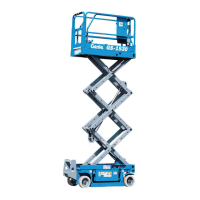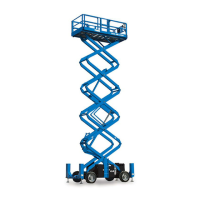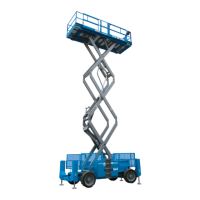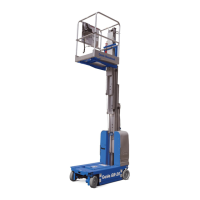August 2021 Service and Repair Manual
Manifolds
Part No. 1309020GT GS
™
-30m • 32m • 30 • 32 • 46 • 55 65
Valve Coil Resistance
Specification
Note: The following coil resistance specifications
are at an ambient temperature of 68°F / 20°C. As
valve coil resistance is sensitive to changes in air
temperature, the coil resistance will typically
increase or decrease by 4% for each 18°F / 10°C
that your air temperature increases or decreases
from 68°F / 20°C.
3 position 4 way,
20V DC with diode (schematic item F,
AC or DC)
27.2
3 position 4 way,
20V DC with diode (schematic item E)
19
2 position 4 way,
20V DC with diode (schematic item H,
AI
19
2 position 2 way,
N.C. 20V DC with diode (schematic item
N)
25
2 position 4 way,
20V DC with diode (schematic item AE or
DE)
19
Solenoid valve, 3 position 5 way,
20V DC with diode (schematic item AG or
DG)
19
Solenoid valve, 2 position 2 way,
20V DC with diode (schematic item CA,
CB, CC and CD
27.2
Solenoid valve, 3 position 4 way,
20V DC with diode (schematic item BA)
19
Proportional solenoid valve,
2 position
way,
20V DC with diode (schematic i
tem DN)
23.9
3 position 4 way
24V DC with diode (schematic item EA,
HD)
33.75
2 position 4 way
24V DC with diode (schematic item EC,
HC)
33.75
How to Test a Coil Diode
Genie incorporates spike suppressing diodes in all
of its coils. Properly functioning coil diodes protect
the electrical circuit by suppressing voltage spikes.
Voltage spikes naturally occur within a function
circuit following the interruption of electrical current
to a coil. Faulty diodes can fail to protect the
electrical system, resulting in a tripped circuit
breaker or component damage.
Electrocution/burn hazard.
Contact with electrically charged
circuits could result in death or
serious injury. Remove all rings,
watches and other jewelry.
1 Test the coil resistance. Refer to Repair
Procedure, How to Test a Coil.
2 Connect a 10Ω resistor to the negative
terminal of a known good 9V DC battery.
Connect the other end of the resistor to a
terminal on the coil.
Note: The battery should read 9V DC or more
when measured across the terminals.
Ω
3 Set a multimeter to read DC amperage.
Note: The multimeter, when set to read DC
amperage, should be capable of reading up to
800 mA.
4 Connect the negative lead to the other
terminal on the coil.

